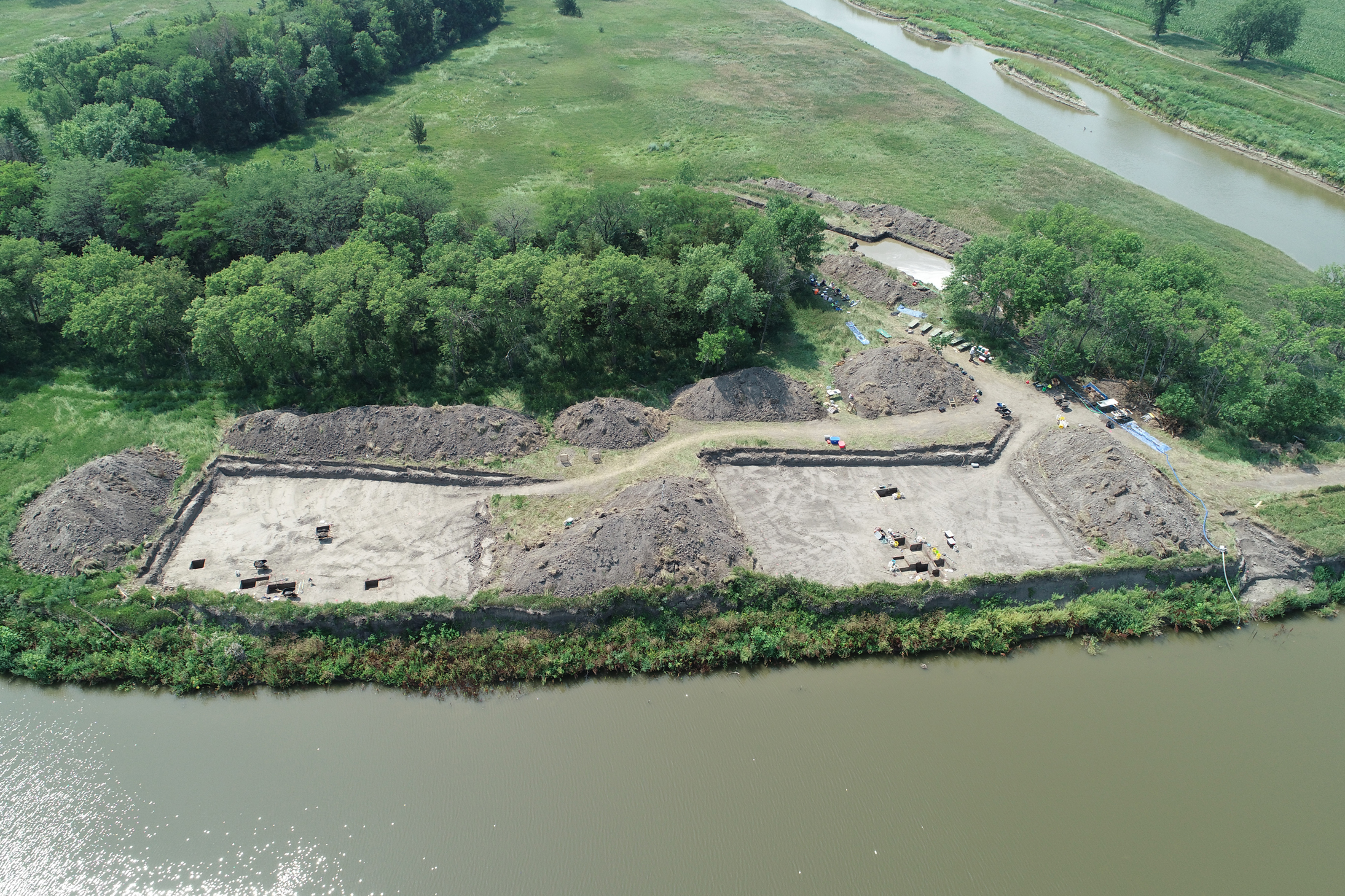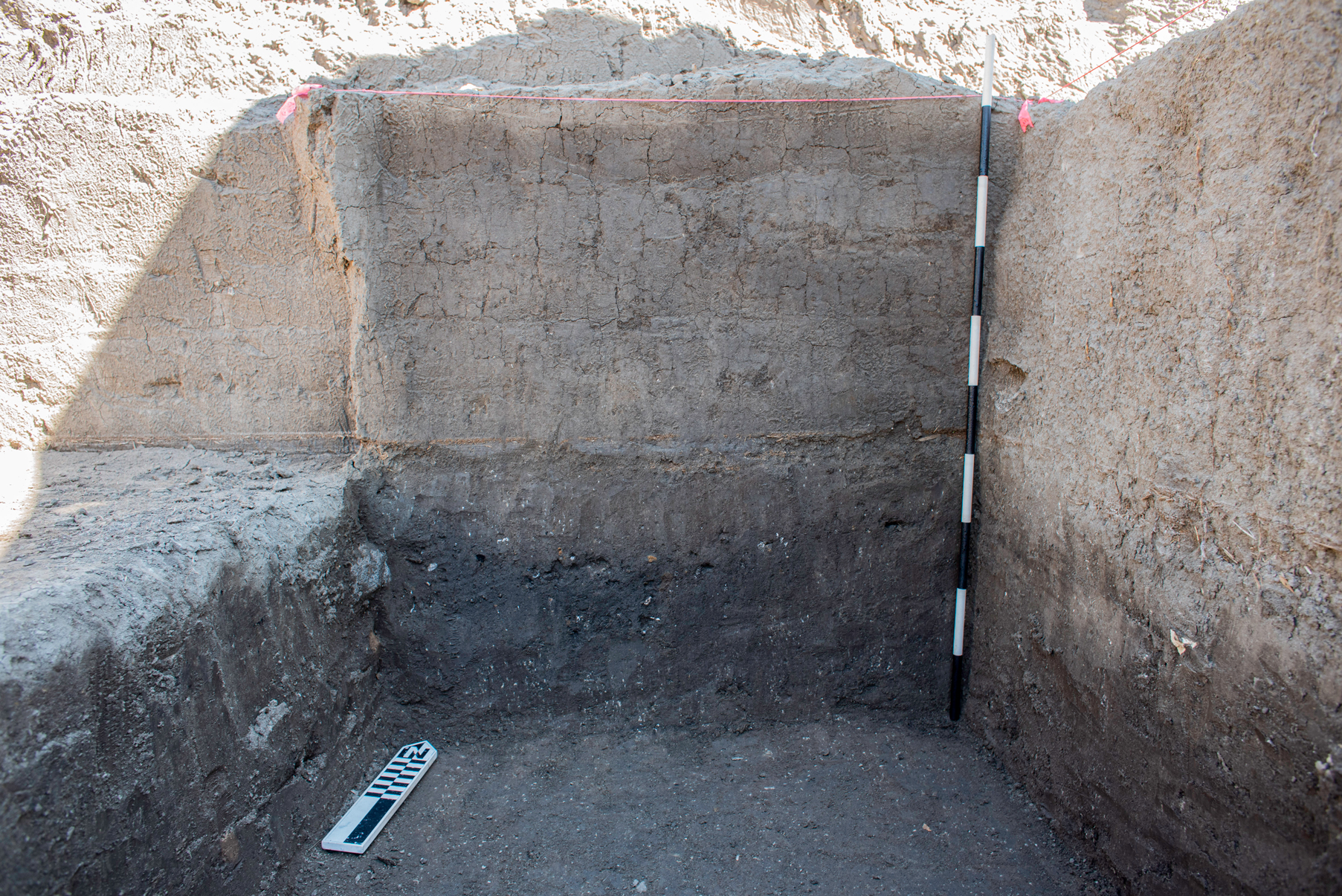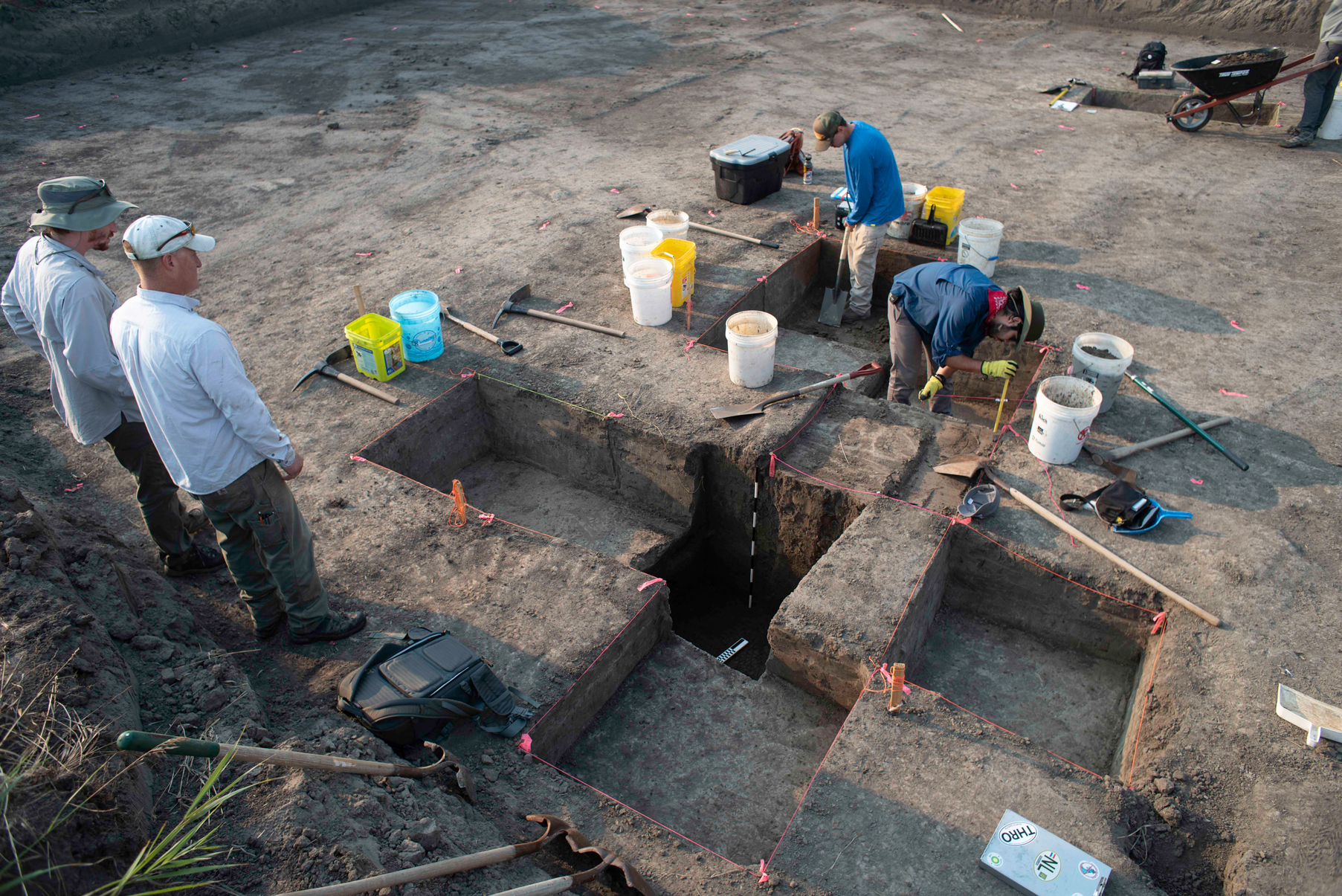
Photo: Daan Meens.
Metcalf’s 2018 Investigations
The 2018 investigations used radiocarbon dating of a charcoal sample from the deepest component (270-300 cmbs) to determine that the earliest occupation of the site was during the Early Plains Archaic period, 5769-5990 B.P. Chipped stone artifacts were also recovered from this period.
Artifacts recovered at the depths of 150-180 cmbs included lithic (stone) artifacts and faunal (animal) remains that indicate that bison were processed at the site. The assemblage included a culturally-modified bison bone that was radiocarbon dated to 3576-3813 B.P., which confirms that the site was occupied during the Middle Plains Archaic period.
Archaic period: The Archaic period on the Great Plains is used to categorize discoveries dated between 8,000 and 1,000 years ago. It is divided into three parts: Early Plains Archaic (8,000-5,500 years ago), Middle Plains Archaic (5,500-3,000 years ago), and Late Plains Archaic (3,000-1,000 years ago).
Assemblage: a collection of artifacts from a specific area within a site
Component: all of the recovered materials from a specific occupation period of a site. A site can have multiple components, indicating many different occupations through time.
Time-lapse of excavations. Video: Daan Meens.

Photo: Daan Meens.
Summer 2021
In July and August 2021, Metcalf returned to the site with a crew of 12 and excavated 28 1×1 meter units. The lithics recovered from Component 1 show that the location was used to process animals: projectile points, blades for butchering, and scrapers for processing hide. The faunal remains showed signs of heavy processing of mostly bison to recover food from the animals.
Metcalf found a similar situation in Component 2, the middle Archaic component. Component 2 included a formal hearth, burned bones of a carnivore, and a few additional charcoal stains.

Photo: Daan Meens.
Dating the Site
The results of the investigation produced fantastic results that included one diagnostic projectile point from the Component 3 or 4 cultural deposits, as well as one from the Component 2 deposits.
The artifacts discovered at this site are in line with the morphology, or shape, of similar points from the Early Archaic period and Middle Archaic period and help date the site to those periods. The artifacts and radiocarbon dates recovered support the evidence of an Early Archaic period occupation on the plains.
With the completion of fieldwork on site 39BE122, the site’s artifacts and the previous radiocarbon dates help date the site to the Early and Middle Archaic periods. Other investigations in the region have not been able to confidently date sites of this age, which could make 39BE122 one of the oldest recorded sites in the region. It supports the growing evidence of Early Archaic period occupation in the Middle James Archaeological Region.
Metcalf is proud to support our clients while also making discoveries that help us all better understand the history of the world around us.
